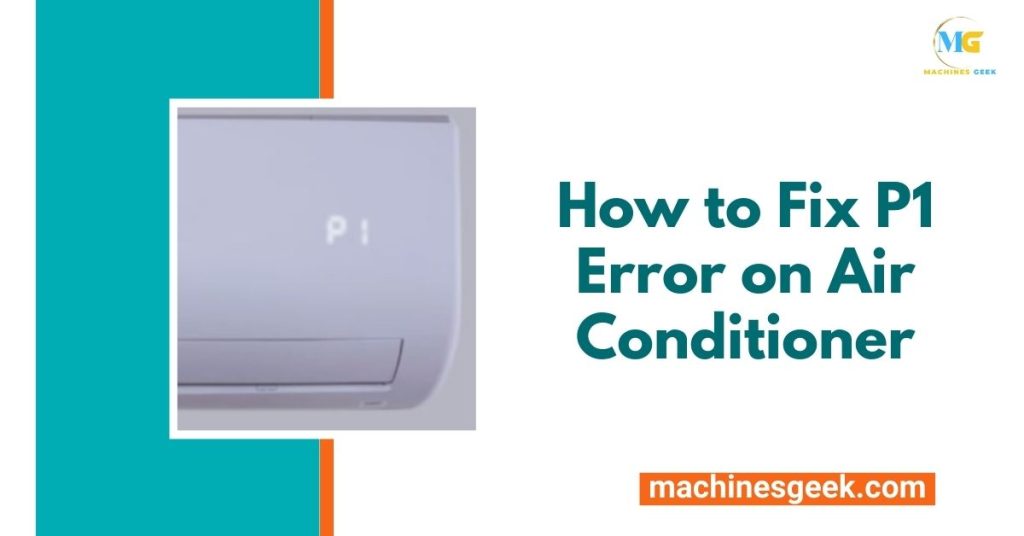How to Fix P1 Error on Air Conditioner? To fix a P1 error on an air conditioner, try resetting the unit by turning it off, unplugging it, and waiting for a few minutes before plugging it back in and turning it on again. Ensure the air filter is clean and not obstructing airflow, and check the condenser coils for dirt or debris that may be blocking proper operation.
Common Reasons For The P1 Error
One common reason for the P1 error on an air conditioner is a lack of proper maintenance. Regular maintenance is crucial to keep your air conditioner functioning optimally. Failure to clean or replace dirty air filters can lead to restricted airflow, causing the unit to overheat and trigger the P1 error. It is important to clean or replace air filters regularly to prevent dust and debris buildup.
Another reason for the P1 error is low refrigerant levels. Low refrigerant can hinder the cooling process and cause the air conditioner to freeze up. This can result in the P1 error code being displayed. If you suspect low refrigerant levels, it is recommended to contact a professional technician to assess and refill the refrigerant to the appropriate levels.
Step-by-step Guide To Fix The P1 Error
To resolve the P1 error on your air conditioner, you should start by checking the unit for visible issues. Look for any loose connections, damaged wires, or debris obstructing the airflow. If you notice any problems, consult the manufacturer’s manual or contact a professional technician for assistance.
Next, make sure to clean or replace the air filters. Dirty filters can restrict airflow and cause the P1 error to occur. Remove the filters and clean them thoroughly with water and mild detergent. Alternatively, if the filters are heavily soiled or damaged, it’s best to replace them with new ones.
If the P1 error persists, it may be necessary to refill the refrigerant levels. Low refrigerant can trigger the error and affect the performance of your air conditioner. Consult a qualified professional who can accurately assess the refrigerant levels and add more if needed.
Preventative Measures For Future P1 Errors
To prevent future P1 errors on your air conditioner, it is important to establish a regular maintenance schedule. Cleaning and maintaining air filters should be done on a monthly basis to ensure proper airflow and prevent dust and debris buildup.
This can be done easily by removing the filters and washing them with water or using a vacuum cleaner to remove any dirt. Monitoring refrigerant levels is also essential as low levels can cause the P1 error to occur. A professional technician can check and recharge the refrigerant if necessary.
Regular maintenance will not only help prevent P1 errors but also improve the overall efficiency and lifespan of your air conditioner, ensuring it operates at its best.
Frequently Asked Questions
What Does P1 Error Mean On An Air Conditioner?
The P1 error on an air conditioner typically indicates a problem with the compressor or low refrigerant levels.
How Can I Fix The P1 Error On My Air Conditioner?
To fix the P1 error on your air conditioner, try cleaning the air filters, checking for any refrigerant leaks, or contacting a professional technician for assistance.
Why Is My Air Conditioner Showing The P1 Error?
The P1 error on your air conditioner can be caused by a variety of issues such as a malfunctioning compressor, low refrigerant levels, or a blocked air filter. Checking these components can help identify the problem.
Conclusion
Fixing the P1 error on your air conditioner is essential for its smooth functionality. By following the steps outlined in this blog post, you can easily troubleshoot and resolve this issue. Remember to check the power supply, clean the air filters, and ensure proper ventilation.
Regular maintenance and prompt action can help prolong the lifespan of your air conditioner and provide you with comfortable indoor temperatures.








